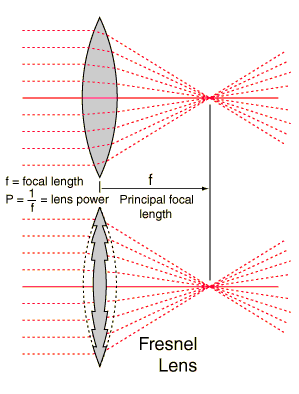Fresnel was a 19th century French physicist. He was the son of an architect and was schooled by his parents but was considered to be a slow learner when at the age of 8 he still had difficulties reading. When he was sent to an actual school for a formal education at the age of 12 it was then that he was introduced to science and mathematics; he excelled greatly at both.
He decided he wanted to become an engineer and in 1806 he went to the School of Civil Engineering. After graduating, he worked for several years on engineering projects for the French government departments but due to Napoleon returned from Elba in 1815 he lost his post but only temporarily. During the time when he wasn’t working for the government was when he started to become interested in optics.
Fresnel came up with formulas that could explain refraction, double refraction, reflection, and the polarization of light reflected from a transparent substance. The work he did supported the concept of transverse vibrations in light waves, which he evaluated mathematically and the wave theory. He also developed a method that ended up producing circularly polarized light. In 1819 he was nominated a commissioner of lighthouses and began to encourage that mirrors be replaced with compound lenses in lighthouses, which he invented a lens for the task. The type of special lens he constructed for lighthouses is called today the Fresnel lens. Here is a little information on those lenses and why he needed to construct them differently.
"Faced with the need to construct a large lens for a lighthouse of appropriate focal length, but unable to support the large weight of a double convex lens of that size, French physicist Augustin Fresnel (1788-1827) reasoned that it was the surface curvature which gave the focusing power. He reproduced the surface curvature of the thick lens in sections, maintaining the same focal length with a fraction of the weight. The lens strength in diopters is defined as the inverse of the focal length in meters." http://hyperphysics.phy-astr.gsu.edu/hbase/geoopt/fresnellens.html
 |
The type of lens he invented is used in many lighthouses around the world and has a very distinctive shape, sort of resembling a beehive with a lamp in the center.
 |
| http://en.wikipedia.org/wiki/Lighthouse |
"The lens is composed of rings of glass prisms positioned above and below the lamp to bend and concentrate the light into a bright beam. The Fresnel lighthouse lens works so well that the light can be seen from a distance of 20 or more miles." http://micro.magnet.fsu.edu/optics/timeline/people/fresnel.html
The lighthouses before he invented his lens, the ones that used mirrors, could only reflect light to small distances and reflect barely enough light in fog or misty nights.
During his lifetime Fresnel was awarded for his work and was was a member of many societies. He read a memoir on diffraction of light in 1818, which he received the prize of the Academie des Sciences at Paris and in 1823 he was unanimously elected a member of the French Academy of Sciences. Two years after that in 1825 he also became a member of the Royal Society of London who later awarded him the Rumford medal. He died shortly after that in1827 of consumption on the 14th of July.
No comments:
Post a Comment